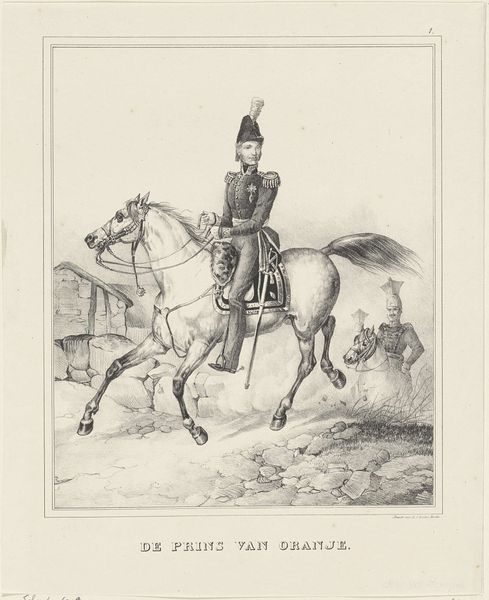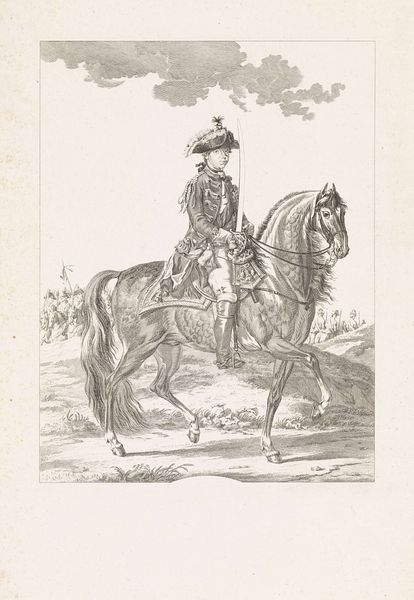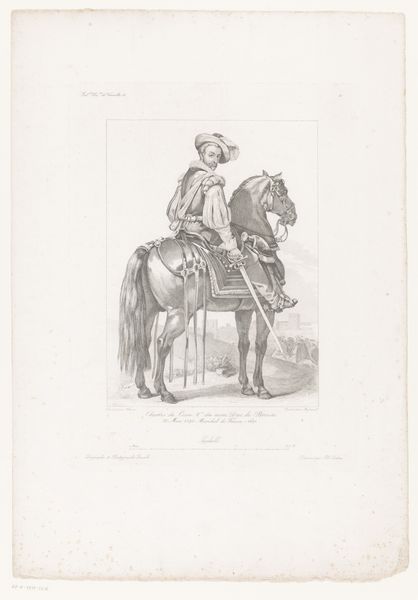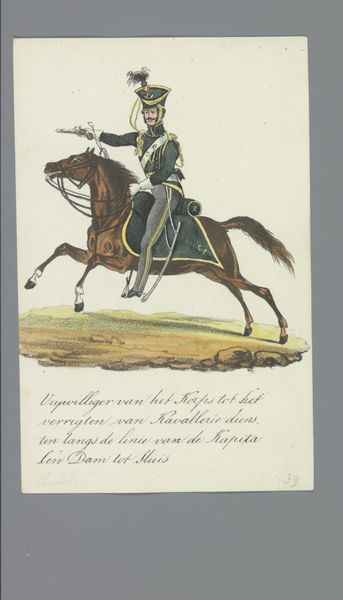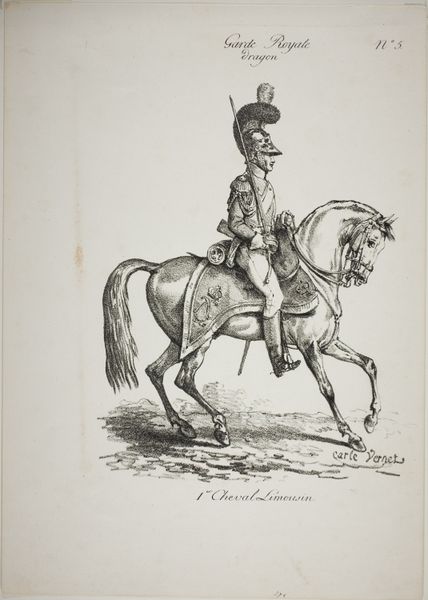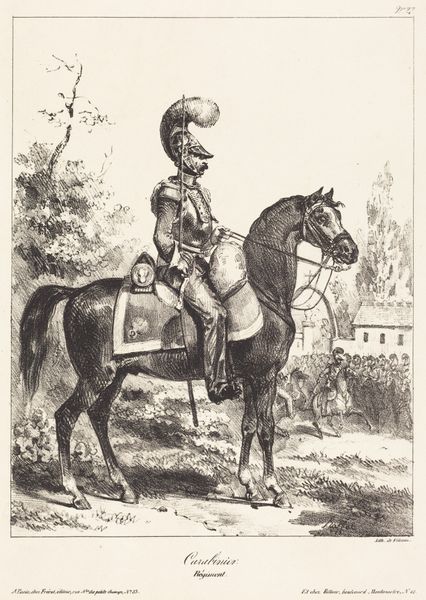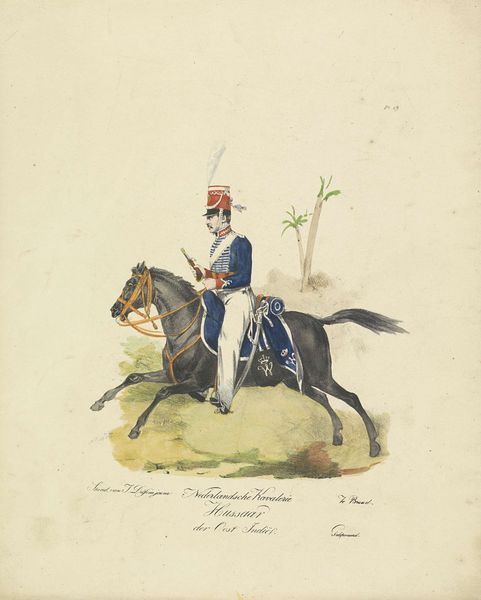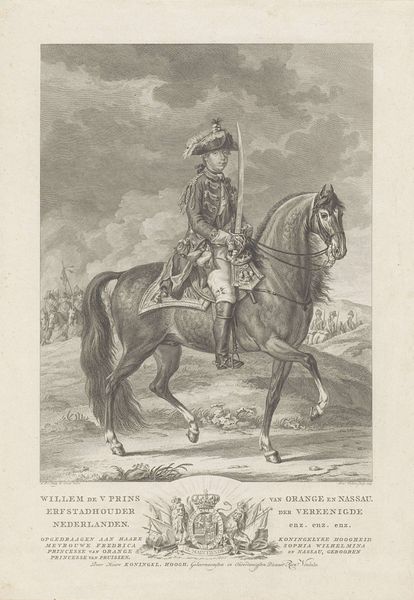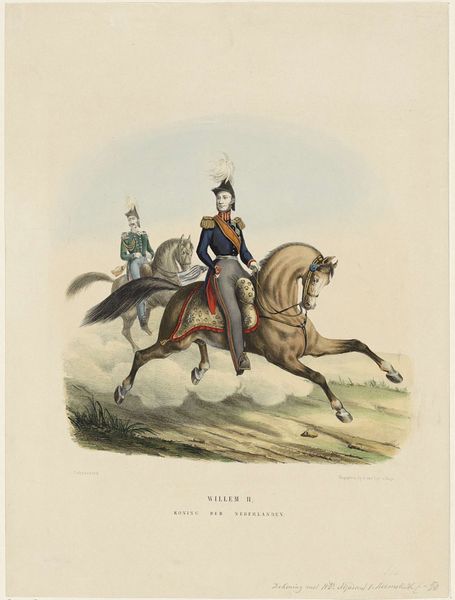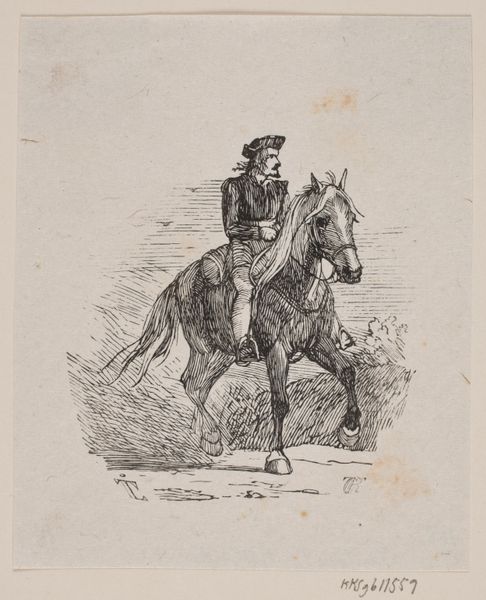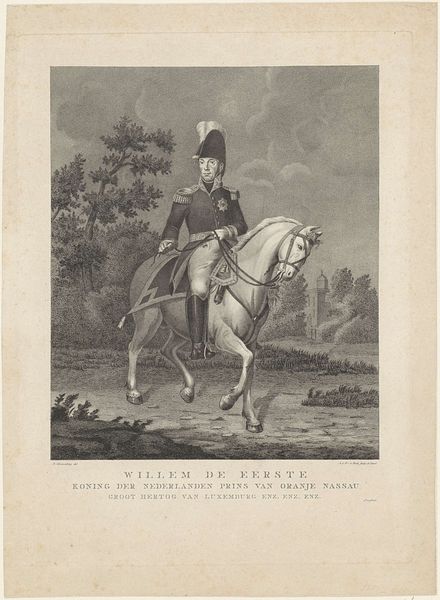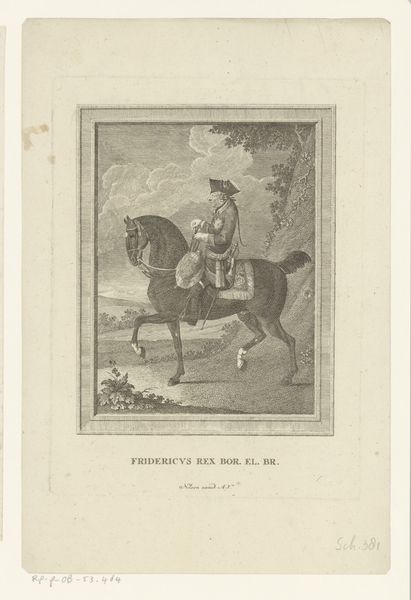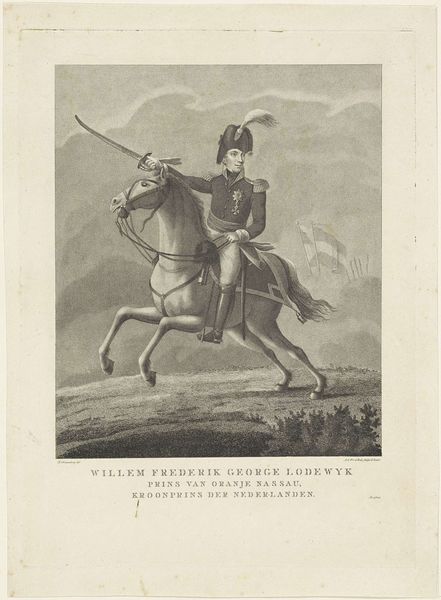
#
portrait
#
neoclacissism
# print
#
landscape
#
19th century
#
history-painting
Dimensions: height 480 mm, width 338 mm
Copyright: Rijks Museum: Open Domain
Curator: This is "Ruiterportret van Frederik, prins der Nederlanden," or "Equestrian Portrait of Frederick, Prince of the Netherlands" a print created by Théodore Fourmois between 1831 and 1833. It’s a rather striking image of Prince Frederick on horseback. Editor: Indeed. What immediately catches my eye is the monochrome palette and the careful etching work. It creates a sense of formality, yet the dynamic pose of the horse injects a bit of restrained energy into the composition. Curator: And formality would have been precisely the point. Equestrian portraits have long been a symbol of power and authority. This particular depiction reinforces Frederick's status, anchoring him to Neoclassical ideals while also subtly reflecting the turbulent historical period. Editor: The Neoclassical elements are evident, yes. The controlled lines and balanced composition certainly speak to that. But, I wonder about the placement of the battle scene, a somewhat softer rendering almost obscured in the background, it lends itself to more of a symbolic, than realistic account, perhaps hinting at a complicated political environment? Curator: I see what you mean. He’s presented as a triumphant leader. But that faint battle seems like a faint historical memory – the suggestion of a recent war and perhaps even turmoil that informed and underpinned the consolidation of national identity and monarchical rule. It evokes notions of duty and the burdens of leadership. Editor: And what of his clothing? Is there more cultural data embedded into its presentation? Curator: His attire further reinforces the symbolism. He's in full military dress, conveying competence, discipline and devotion to his leadership role, which projects an aura of steadfast resolve and national unity. Editor: So, we’ve gone from the structure of a piece to how it evokes its period’s ideas about leadership and authority... Intriguing. Curator: Yes, it provides a glimpse into how images can perpetuate particular understandings and emotional resonances over time. The past always remains very present. Editor: A rather nuanced work; initially formal and stiff it gradually unfolds in deeper historical layers. A useful reminder of what the artist leaves visible in its framework and what lies partially concealed.
Comments
No comments
Be the first to comment and join the conversation on the ultimate creative platform.

